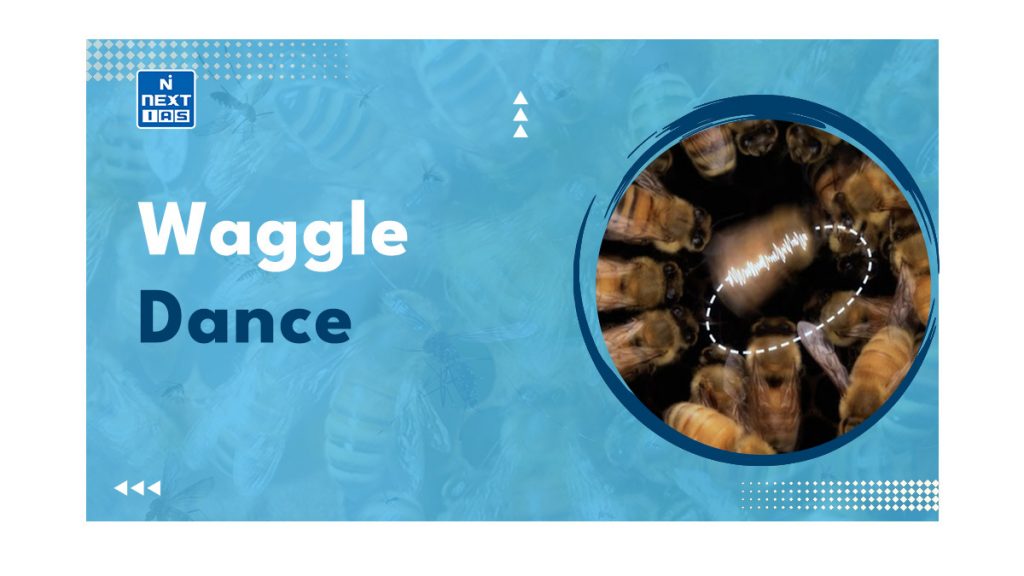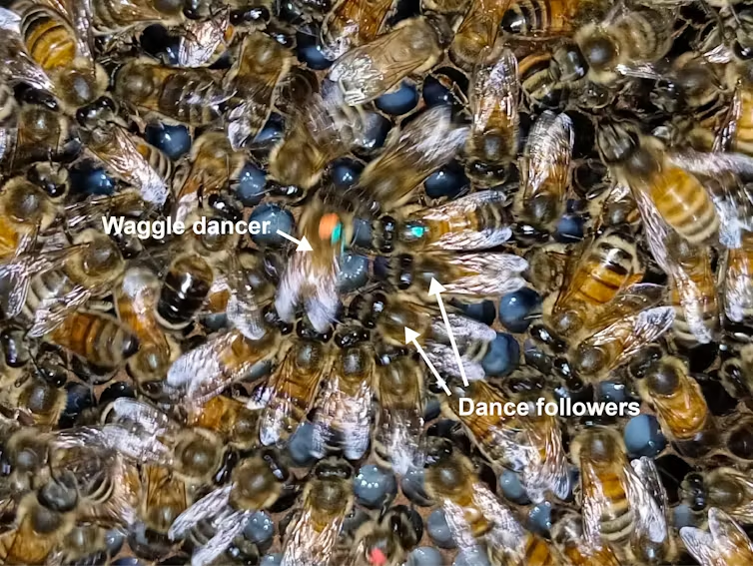
Honeybees have a remarkable method of communication known as the waggle dance. This intricate dance serves as a way for forager bees to convey crucial information about the location, direction, distance, and quality of valuable resources to their hive mates. This article delves into the exciting world of the waggle dance of honeybees and also explores some of the prominent honeybee species found in India.
About the Waggle Dance
The waggle dance is a form of communication used by the honeybees (Apis mellifera) to convey information about the location of resources like food, water, or nesting spots to other members of their colony. It is one of the most intricate forms of bee dance communication, which communicates the bearing, distance as well as the quality of a resource.
Key Features of the Waggle Dance
The waggle dance of honeybees is an intricate and precise pattern of movements that a forager bee exhibits upon returning to the hive. The various aspects of the dance communicate varied information about a resource. These are described as follows:
- Location of Food Sources– The main purpose of the waggle dance is to inform other members of the hive about the location of profitable food sources, such as flower patches with abundant nectar and pollen.
- Direction– The orientation of the waggle dance indicates the direction of the food source in relation to the sun. For example, if the bee waggles while moving upward on the vertical comb, the food source is located in the direction of the sun. If it waggles while moving downward, the food source is opposite to the sun.
- Distance– The duration of the waggle phase is related to the distance of the food source. The longer the waggle runs, the farther away the food source is from the hive.
- Quality– The vigor of the waggle dance is believed to convey information about the quality of the food source. A more vigorous and energetic dance may indicate a richer or more abundant food source.
- Recruitment of Foragers– The waggle dance inspires other worker bees within the hive to venture out to the reported food source. The more energetic and detailed the dance is, the more likely it is that more bees will be convinced to go out and collect food from that place.
- Environmental Adaptation– The waggle dance allows honeybees to communicate in their dark hive environment enabling the colony to quickly and collectively exploit food resources in the surrounding environment.

Prominent Species of Honeybees Found in India
India is home to several species of honeybees, contributing to the country’s rich biodiversity. Some famous species of honeybees found in India are:
- Indian Hive Bee (Apis cerana indica) – This species is native to the Indian subcontinent. These bees are commonly found in forests, agricultural areas, and urban environments. They are also known as the Eastern Honey Bee.
- Western Honey Bee (Apis mellifera) – This species is not originally from India, but it has been introduced into the country and is now found in many areas. This bee species is used in apiculture and is valued for honey production.
- Rock Bee (Apis dorsata) – This species is known for building large, single-comb nests usually attached to cliffs, trees, or other high places. They are important pollinators and honey producers.
- Little Bee (Apis florea) – This species is the smallest among the honeybees. They build small nests in open areas, and their colonies are relatively small compared to other honeybee species. They are also called the Dwarf Honey Bees.
- Giant Honey Bee (Apis dorsata) – This species is known for building large nests in exposed locations. They are crucial pollinators for various crops and plants.
- Indian Black Honey Bee (Apis dorsata indica) – This is the subspecies of Giant Honey Bees which is native to the Indian subcontinent. They are social insects that live in colonies. Indian Black Honey Bee collects nectar and pollen from various flowering plants, contributing to the pollination of crops and wildflowers.
In the world of honeybees, the waggle dance stands out as a remarkable example of communication, showcasing the cooperative nature of these vital creatures. Through precise movements, honeybees convey crucial information about food sources, enabling their colonies to efficiently exploit resources. By understanding and appreciating these natural marvels, we can contribute to the conservation of honeybees and the ecosystems they support, ensuring a thriving environment for generations to come.
Related Prelims PYQs
UPSC Prelims 2023
Which of the following organisms perform waggle dance for others of their kin to indicate the direction and the distance to a source of their food?
(a) Butterflies
(b) Dragonflies
(c) Honeybees
(d) Wasps
Correct Answer: Option (c)
Frequently Asked Questions
What is Waggle Dance?
The waggle dance is a form of bee dance communication used by honeybees to convey information about the location of food sources to other members of the hive.






